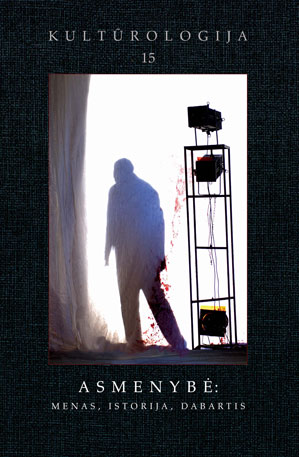Asmenybės kultas Lietuvos dailėje po "asmenybės kulto"
Personality Cult in Lithuanian Art After the "Personality Cult"
Author(s): Erika GrigoravičienėSubject(s): Cultural history
Published by: Lietuvos kultūros tyrimų
Keywords: Personality cult; Lithuanian art
Summary/Abstract: Two clear trends can be noticed in the politics of the "humanisation" of art during the post-Stalinist period: from the late 50s through the 60s special attention was paid to the individuality of an artist and in the early 70s - to the representation of an individual person in the portrait genre. In the late 50s, after the rejection of academistic Socialist Realism canons, "subjective interpretation of reality" was promoted and become the invention and repetition of individual representation schemes in the artistic practice. "Artistic individuality", common in the public art discourse and analogous to the concepts of "author", "genius" or "originality" in the art theory of modernism, also was an ideological construction, a propaganda term, signifying the high status of an elite culture. During the following decade the creations of "individualities" acquired some features of the "dehumanised" modern art. The overvaluation of the means of expression eventually constituted a digression from the "humanistic" image of man, although the opposite ought to have occured. In the late 60s and early 70s the self-reproduction of individualities and the rough, uniform, reduced image of man, that prevailed in their works, started to cause the discontent of the authorities. The "humanistic pathos of portrait" became the new slogan of the art policy. In 1973-1974 the newly activated campaign in favour of the portrait genre, a means of disciplining the artistic individualities, was in the first place directed towards education of the youngest artists. Soviet art tried to revive the traditions of an "autonomous" portrait that originated in the Renaissance and were rejected by the "dehumanised" modernism and devalued by the Stalinist Socialist Realism. Portrait represented traditional values that were allegedly trampled in the West, but flourished in the USSR. An interesting result of the portrait campaign in Lithuanian art was the abundance of artists' portraits. Having the possibility to select the model, artist used to choose their colleagues, relatives, other members of the creative intelligentsia. To tell the truth, artists were usually represented as simple living people, sometimes even as unknown models in the portraits. There were fewcases when, through the reflection of the act of representation, it was attempted to represent the identity of an artist as a professional. On the summaries other hand, the gallery of artists' portraits achieved a special significance: it was testimony of the elitist artist milieu's isolation and indirectly refered to the developing art system as to an autonomous social (sub)system. After 1974 there were no more "republic size" exhibitions of portrait, although it was planned to organize them regularly. In the middle of the 70s the art "humanisation" campaign lost its force and its results were, apparently, not satisfactory...
Journal: Kultūrologija
- Issue Year: 2007
- Issue No: 15
- Page Range: 306-338
- Page Count: 32
- Language: Lithuanian

